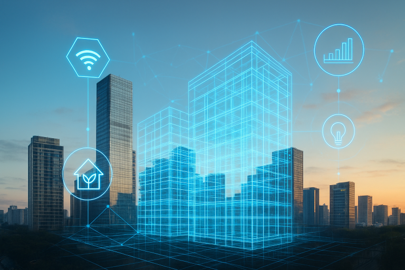The Growing Role of Smart Technologies in Sustainable Construction
The construction industry is undergoing a digital revolution, where innovative technologies are reshaping how buildings are designed, built, and operated. Beyond improving efficiency, these innovations are becoming critical in achieving sustainability goals and creating resilient urban environments.
Why Sustainability Needs Smart Construction
As cities expand and populations grow, the demand for infrastructure is increasing rapidly. Traditional construction methods, however, are resource-heavy and contribute significantly to carbon emissions. This is where innovative construction technologies play a pivotal role. From reducing material waste to optimising energy consumption, they provide practical ways to build greener, more creative, and more cost-effective projects.
Key Smart Technologies Transforming the Industry
1. Building Information Modelling (BIM)
BIM is more than just 3D modelling; it’s the backbone of innovative construction. By integrating data into digital models, BIM improves collaboration, reduces rework, and enhances decision-making. With the rise of connected construction, BIM is also being paired with AI and IoT for real-time monitoring.
2. IoT Sensors for Smart Buildings
Internet of Things (IoT) devices are making buildings intelligent and responsive. Sensors can track temperature, energy usage, air quality, and occupancy patterns to help facility managers optimise performance while reducing costs and emissions.
3. Digital Twins
Digital twins are virtual replicas of physical assets that are continuously updated with real-time data. They are especially valuable for predictive maintenance, energy optimisation, and lifecycle management of complex projects.
4. Artificial Intelligence (AI) and Machine Learning (ML)
AI-driven tools help identify patterns, predict project risks, and automate design processes. Machine learning enhances scheduling, safety analysis, and cost forecasting—making projects more efficient from start to finish.
The Human Factor in Smart Construction
While technology is a powerful enabler, its success ultimately depends on people. Skilled professionals who can interpret data, manage digital workflows, and collaborate across disciplines are critical. Adopting AEC innovative technologies is not about replacing human expertise but enhancing it. For a deeper look at how these tools shape the industry, you can explore AEC smart technology solutions, which provide insights into innovative digital strategies.
The Road Ahead: Smarter, Greener, and More Efficient
Integrating innovative technologies is not just a trend—it’s the future of construction. As governments and organisations push for net-zero goals, these tools will be instrumental in:
- Reducing energy use in buildings.
- Optimising construction workflows.
- Enhancing safety and productivity.
- Supporting circular economy practices.
Conclusion
Innovative technologies are redefining the construction landscape, making building faster, safer, and more sustainable. By embracing digital innovations such as BIM, IoT, AI, and digital twins, the AEC industry is paving the way for smarter cities and greener futures.



